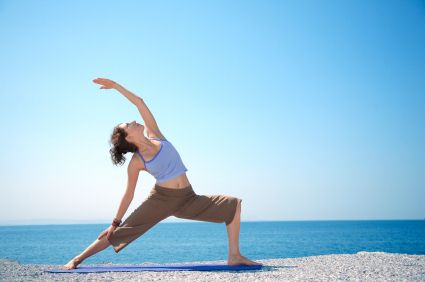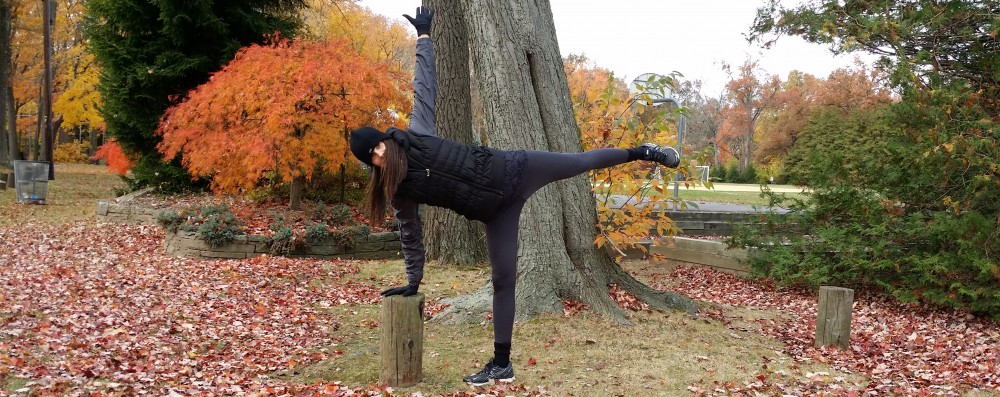
I ran into someone today and, after I asked, “how are you?” this person blurted out: “I’m in transition.”
From the intonation, I got the feeling that transition was perceived as a place of uncertainty and unease.
Later, I reflected on the conversation and my first thought was, we are always in transition or in contact with it in one way or another.
Nature is our first mirror: sunrise to sunset, waxing and waning moon, conception to pregnancy to birth, childhood to adulthood to death, seed to tree, seasons.
We witness transition on a daily basis, but when in a new phase, there is a tendency to feel lost and sometimes worried: When will this be over? or How will I do it?
We become one with the confusion of foreign circumstances, instead of embracing an inner knowledge that this too, shall pass because it’s part of the whole. Then somehow, we prepare ourselves, we cope, master, muster, muddle and make it. This despite not always having the end in sight.
I see students through life transitions and feel privileged to witness huge transformations. For some, feeling lost or not at the next step of the journey, provides an opportunity to seek reconnection or new acquaintance with inner guidance.
Yoga is an awesome choice for this; from the internal practice of
meditation to the external attitudes towards self and environment. If you’re faced with the transition from marriage to divorce, job to job-seeking, breakdown to breakthrough, grief/panic/loss to equanimity, insomnia to inner rest, finding a way to be peaceful and at ease in the wholeness of your present moment provides a clarity and inner strength, a resilience and an inner resourcefulness that anchors you. And, let us not forget, surrender…
I know it’s not always easy. I think about this every March because here in Montreal, the crocuses and tulips start to peek through the ground, which is not always fully thawed. How hard it must be for these flowers to sprout and be colorful amid the gray of our not-yet-finished winter.
Yet, those flowers push through and it all works out. I’m sure not all of them bloom but for the most part, Nature has both the challenge and the reward of growth built in.
We kind of have to be warriors in life. Spiritual Warriors. This is not a reference to fighting per se, but to perseverance, and determined inner strength.
Warrior Pose (
Virabhadrasana) in its variations actually refers to the dialogue in the
Bhagavad-Gita, and is more of an ideal for the practitioner, who exhibits bravery in the battle with the universal enemy of self-ignorance (
avidya), which in the yoga system, is seen as the ultimate source of our suffering – if we only felt at one with where we are and who we are without feeling disconnected from the Source…
If you’re in transition, here are 10 things you can try:
1. Practice “let go and let God.”
Show up, do your best, and let the universe do the rest.
2. Simulate.
Who is it or where is it you want to be? What are the attributes you can simulate now?
3. Breathe.
Inhale full, exhale with the Aaahhh sound…deep sighs help to train you to hear your own voice
4. Practice gratitude.
Before you go to bed at night, say
thank you for one thing
5. Listen.
Practice
listening to what you are hearing as guidance. Check in with yourself and notice hatever it is that comes up: witness, hear, listen and act. It could be as simple as buying
kale, going to the gas station, updating your CV, saying hello to someone, and connecting on LinkedIn.
6. Try one new thing.
Get out and do one new thing. Movement of any kind trains your brain that you are not stuck.
7. Relax.
Try a relaxation practice. Some ideas include: talk therapy, massage, or
meditation.
8. Don’t listen to everyone else’s advice.
Sometimes if you are in transition, less advice is better, or just the ‘right’ advice…it’s OK to be protective of new growth.
9. Honor yourself.
Honor and accept yourself as you are where you are…there is usually a beginning, a middle and an end to each cycle before a new one starts
10. Try yoga.
Try the whole the whole system, but for now – a little experiment:
Simplified directions for Warrior 1 (Virabhadrasana1)
- Stand tall and straight in Mountain Pose, legs parallel
- Step one leg forward, while keeping the back leg straight, rooted through the heel, and slightly angled
- Exhale and bend front leg without lunging forward
- Keep spine vertical
- Inhale raise arms to align with ears or where comfortable for your shoulders or just resting them
- Tuck pelvis under, and by pushing into feet, feel the upper body become light and free as you reach up through fingers
- Breathe steadily for about 10 breaths, comfortable in balancing with one leg forward, and the other leg back then repeat on other side…process by standing still after…
How did that feel?
Om shanty shanty shanty.
Published October 26, 2012 at 12:00 PM
About
Rana Waxman
Rana Waxman is a Yoga Therapist, who has taught in Montreal for over 17 years. Her background in the healing arts of massage have earned her the nickname ‘the muscle whisperer.” Often called, the “modern yogini,” Rana likes to empower students to take their practice home with them so their yoga becomes a tool for transformation. Her inspired style is a blend between alignment, vinyasa and restorative yoga to promote healthy posture, peace and positivity. Follow Rana on
Facebook and
Twitter.More from Rana Waxman on MindBodyGreen
If You’re Getting Injured In Yoga, Something Isn’t Right
7 Tips to Prevent Headaches
 Actually this pose (halasana/plow pose) has several other benefits:
Actually this pose (halasana/plow pose) has several other benefits:



 I ran into someone today and, after I asked, “how are you?” this person blurted out: “I’m in transition.”
I ran into someone today and, after I asked, “how are you?” this person blurted out: “I’m in transition.”
 The neck is the superhighway between the head and the heart. This path can be affected by stress, which can impede proper breathing. The result? Tension headaches. For these, relaxation is a great cure. One way to soothe your nervous system is through pranayama (alternate nostril
The neck is the superhighway between the head and the heart. This path can be affected by stress, which can impede proper breathing. The result? Tension headaches. For these, relaxation is a great cure. One way to soothe your nervous system is through pranayama (alternate nostril 
